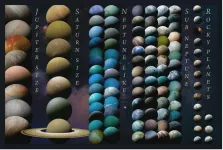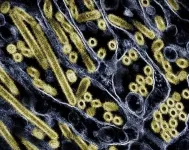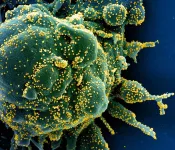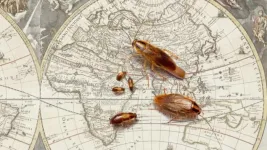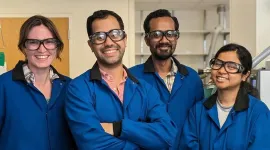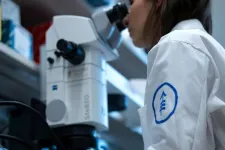LAWRENCE — Using data from the Transiting Exoplanet Survey Satellite and W.M. Keck Observatory on Mauna Kea in Hawaii, an astronomer at the University of Kansas led a study appearing today revealing 15 new exoplanets — planets beyond our solar system — along with the mass of 126 other exoplanets. The findings give astronomers new understanding of the makeup of exoplanets and their star systems generally.
The study cataloging the exoplanets — comprising severe and exceptional environments, some of which hold promise to support life — was conducted under auspices of the TESS-Keck Survey and appears in The Astrophysical Journal Supplement.
“These two facilities (TESS and Keck) work synergistically to study exoplanets,” said lead author Alex Polanski, doctoral student in physics & astronomy at KU, where he works at the KU ExoLab, a research group dedicated to the discovery and characterization of nearby planetary systems. “TESS is a satellite orbiting above Earth's atmosphere, scanning the sky for exoplanets using the transit method.”
This transit method involves observing a planet as it passes in front of its host star, causing a slight dimming of the star's light.
“By detecting and measuring these transit events, researchers can determine the planet's orbital period and size,” Polanski said. “Larger planets block more light, making them easier to detect. However, transit data doesn't provide information about the planet’s mass, which is crucial for understanding its composition.”
Using the Doppler effect to detect mass
To determine the mass of exoplanets, researchers used the Keck Observatory to execute a technique called “radial velocity,” according to Polanski.
“This method involves observing the host star and measuring its spectrum,” he said. “Stars contain elements like hydrogen, helium and iron, which create characteristic absorption lines in their spectra. As a planet orbits its star, the star experiences slight gravitational pull, causing it to wobble. This wobble shifts the star's spectral lines due to the Doppler effect — similar to how a siren's pitch changes as it moves towards or away from you. The amount of shift in the spectral lines is related to the planet's mass; larger planets cause greater shifts.”
The KU researcher said radial velocity was used to discover the first exoplanets around sun-like stars in the 1990s, known as "hot Jupiters" — massive Jupiter-sized planets with short orbital periods of about 10 days. However, smaller planets, especially those between Earth and Neptune in size, create much smaller shifts and need more sensitive instruments like those at Keck.
Largest-ever uniform mass sample of exoplanets
“The TESS-Keck Survey represents the single largest contribution to understanding the physical nature and system architectures of new planets TESS has discovered,” said Ian Crossfield, associate professor of physics & astronomy at KU, who leads KU’s ExoLab and co-wrote the new paper. “Catalogs like this help astronomers place individual worlds in context with the rest of the exoplanet population.”
Indeed, beyond KU or Keck, a global team of astronomers from multiple institutions spent three years developing the catalog; they took TESS planetary data and analyzed 9,204 radial velocity measurements, 4,943 of which were recorded over the course of 301 observing nights using Keck Observatory’s planet-hunting instrument called the High-Resolution Echelle Spectrometer.
“With this information, along with the planets' radii, scientists can estimate the planets' densities and infer their possible compositions,” Polanski said. “This paper is the largest of its kind to date. The last similar one that came out was, I think, a sample of 27 exoplanets. This is up to 126 planets.”
The team said two planets — dubbed TOI-1824 b and TOI-1798 c — are so bizarre they might deepen astronomers’ grasp of planetary diversity and evolution in general:
TOI-1824 b: a superdense sub-Neptune
One of the densest sub-Neptunes in the catalog, TOI-1824 b, has incredible mass for a planet of its size.
“At nearly 19 times the mass of Earth, but only 2.6 times the size of our home planet, TOI-1824 b is an exoplanet oddity,” said co-author Joseph Murphy, doctoral student at the University of California-Santa Cruz. “Planets similar in size typically have a mass between roughly 6 and 12 times the mass of Earth.”
TOI-1798 c: a rare, extreme super-Earth
TOI-1798 is an orange dwarf, or K-type star, that has two planets: TOI–1798 b, a sub-Neptune that has an orbit of about eight days, and TOI–1798 c, a super-Earth that is so close to its host star, it makes one orbit in less than 12 hours. It’s one of only a few star systems believed to feature an inner planet with an ultra-short period (USP) orbit.
“While the majority of planets we know about today orbit their star faster than Mercury orbits the Sun, USPs take this to the extreme,” Crossfield said. “TOI-1798 c orbits its star so quickly that one year on this planet lasts less than half a day on Earth. Because of their proximity to their host star, USPs are also ultra-hot— receiving more than 3,000 times the radiation that Earth receives from the Sun. Existing in this extreme environment means that this planet has likely lost any atmosphere that it initially formed.”
Polanski said a better knowledge of exoplanets and their star systems would give us a better understanding of our own solar system.
“Astronomy has gone through several phases of ‘great demotions,’” he said. “We used to believe Earth was the center of the universe. Then we learned it isn't even the center of the solar system. From there, we discovered Earth is just one planet among many in a galaxy, which is one among billions of galaxies. However, our solar system might be more unique than we thought. About half of all Sun-like stars have a binary companion. Our Sun does not. Only about 10% of Sun-like stars have gas giants like Jupiter or Saturn. This suggests our solar system might be less typical than we assumed.”
END
